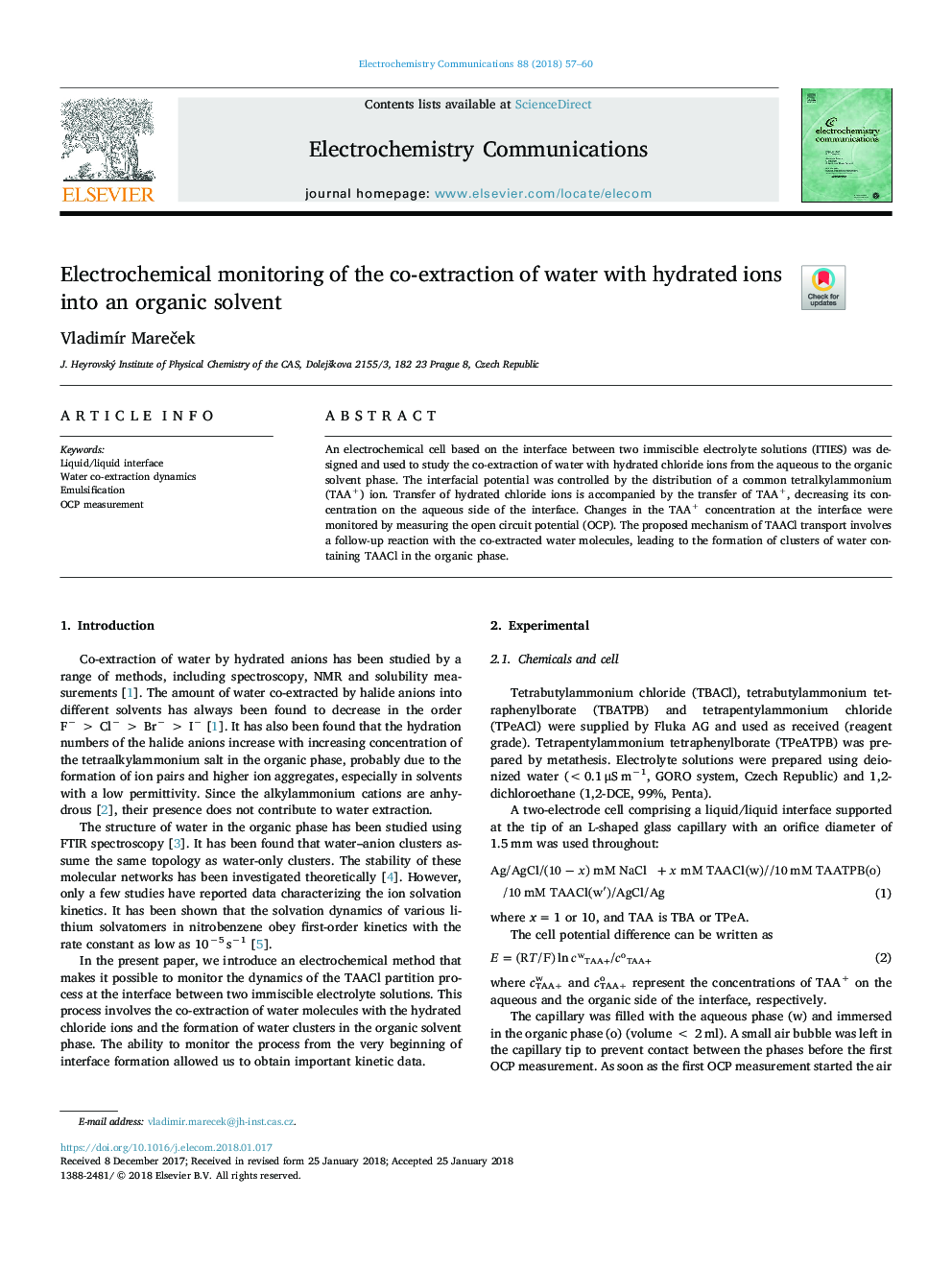| Article ID | Journal | Published Year | Pages | File Type |
|---|---|---|---|---|
| 6600908 | Electrochemistry Communications | 2018 | 4 Pages |
Abstract
An electrochemical cell based on the interface between two immiscible electrolyte solutions (ITIES) was designed and used to study the co-extraction of water with hydrated chloride ions from the aqueous to the organic solvent phase. The interfacial potential was controlled by the distribution of a common tetralkylammonium (TAA+) ion. Transfer of hydrated chloride ions is accompanied by the transfer of TAA+, decreasing its concentration on the aqueous side of the interface. Changes in the TAA+ concentration at the interface were monitored by measuring the open circuit potential (OCP). The proposed mechanism of TAACl transport involves a follow-up reaction with the co-extracted water molecules, leading to the formation of clusters of water containing TAACl in the organic phase.
Related Topics
Physical Sciences and Engineering
Chemical Engineering
Chemical Engineering (General)
Authors
VladimÃr MareÄek,
